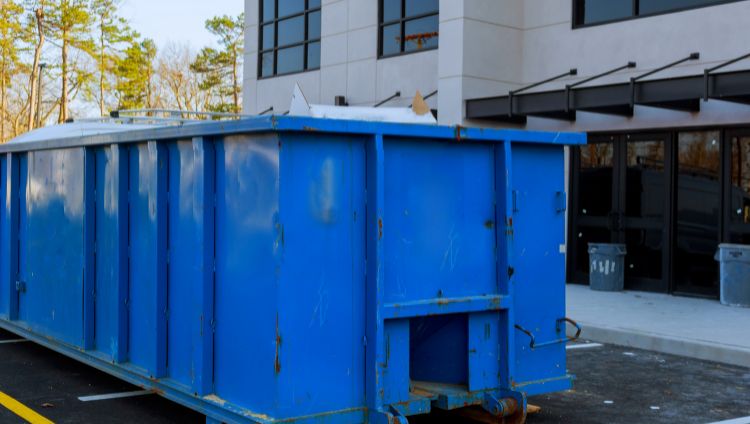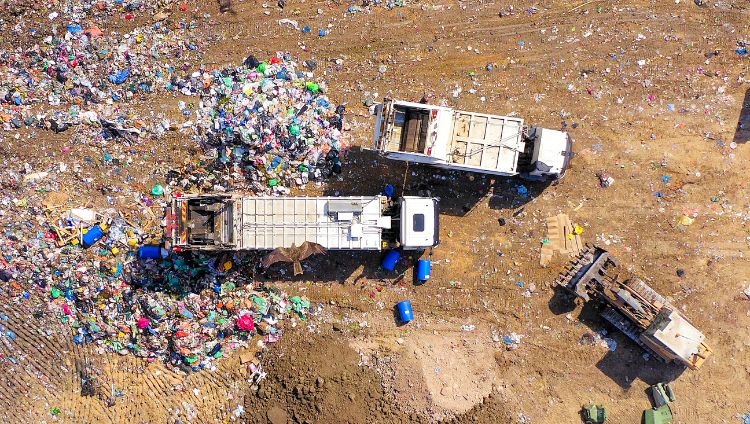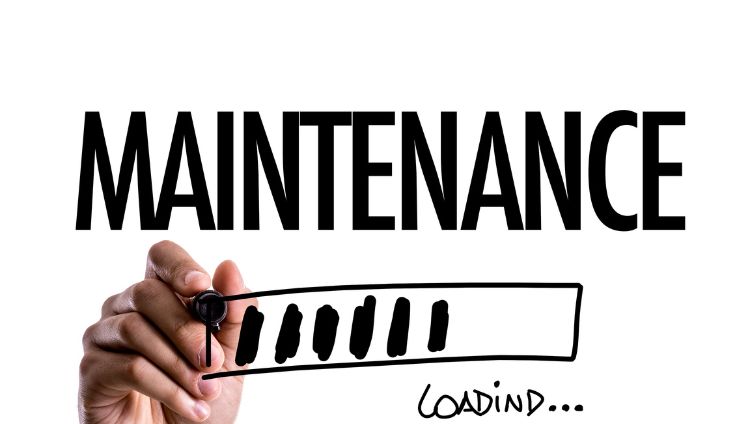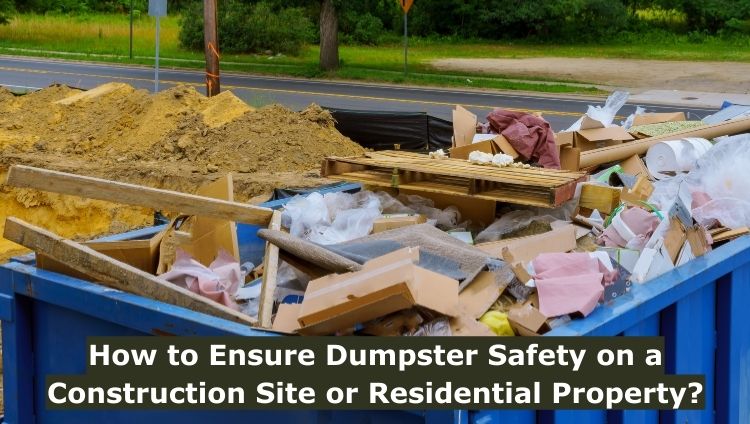Ensure Dumpster Safety by properly using dumpsters on construction sites and in neighborhoods to effectively manage waste and maintain a safe environment.
But if we don’t use them correctly, they can be risky. To keep accidents at bay and make sure people stay safe, we should follow some safety rules when dealing with dumpsters.
In this guide, we’ll learn How to ensure dumpster safety on a construction site or residential property?
Getting the Right Spot:
The first thing to think about is where to put the dumpster. It’s important to choose a spot that’s both easy to reach and safe.
Make sure the ground is flat and sturdy, so the dumpster won’t tip over or wobble.
It’s best to place it on a solid surface, like asphalt or concrete. Also, keep it far away from things like utility lines, big structures (such as scaffolds or cranes), and fire hydrants.
Having enough space around the dumpster makes it easier for waste trucks to pick up and drop off, and it lowers the chances of accidents.
Choosing the Right Size:
Selecting the perfect-sized dumpster is really important for keeping things safe. Take a good look at how much garbage your project generates and then opt for a dumpster that fits just right for that amount.
It’s not safe to overload a dumpster, plus you might end up with fines if you go beyond the weight limit.
If the amount of trash you have fluctuates a lot, it might be a good idea to consider arranging for more frequent pickups or using a couple of smaller dumpsters. This way, everything stays steady and there’s less chance of any damage occurring.

Secure the Dumpster
Properly securing the dumpster is essential. Always lock it when not in use to prevent unauthorized access, scavenging, or illegal dumping.
To keep the dumpster stable, especially on slopes or during loading, use wheel chocks. Installing fences or bollards around the dumpster can further enhance security by providing a protective barrier for both workers and the public.
Training and Education:
Comprehensive training and education are essential for ensuring dumpster safety. It’s important to provide workers and contractors with detailed guidance on proper dumpster usage, safe loading techniques, and applicable safety regulations.
Highlight the significance of following safety protocols, such as wearing the necessary protective gear when handling waste.
Hold regular safety meetings to discuss any concerns and reinforce the importance of complying with safety standards.

Waste Sorting and Hazardous Materials:
Organizing your trash properly is a smart move. Simply have different bins for recyclables, hazardous materials like chemicals or asbestos, and regular waste.
It’s crucial to educate everyone on the correct way to dispose of items, especially when dealing with tricky hazardous materials. They require extra attention to ensure the safety of our environment and people.
Related Post: How to Dispose of Hazardous Waste Safely?

Regular Maintenance:
Regularly inspect the dumpster for signs of damage, wear, or rust.
Pay special attention to the components that secure it, including welds, hinges, and locks.
Promptly address any issues by repairing or replacing the dumpster to avoid accidents and injuries.
Also, make sure to include the wheels, axles, and lids on your maintenance checklist to ensure they remain in good condition.

Frequently Asked Questions
Why is proper dumpster placement so important for safety?
Proper dumpster placement is crucial for safety because it ensures stability and reduces the risk of tipping or accidents. Placing a dumpster on an uneven or unstable surface can lead to dangerous situations.
How do I choose the right dumpster size for my project?
To choose the right dumpster size, assess the volume of waste your project generates. It’s essential to match the dumpster size to the quantity of waste to avoid overloading, which can pose safety risks and result in fines.
What measures can I take to secure the dumpster when it’s not in use?
To secure a dumpster, make sure it’s locked when not in use to prevent unauthorized access, scavenging, and illegal dumping. You can also use wheel chocks to immobilize it and consider adding physical barriers like fencing or bollards for added security.
Why is training and education important for dumpster safety?
Training and education are crucial because they ensure that workers and contractors understand the proper use of dumpsters and safety protocols. Well-informed individuals are more likely to follow safety guidelines, reducing the risk of accidents.
How can I implement a waste sorting system effectively?
To implement a waste sorting system, designate separate containers for recyclables, hazardous materials, and general waste.
Educate workers about proper disposal, especially when dealing with hazardous materials, to prevent environmental harm and potential health risks.
What should I look for during regular dumpster maintenance checks?
During regular maintenance checks, inspect dumpsters for visible signs of damage, wear, or corrosion.
Pay particular attention to structural integrity, including welds, hinges, and locking mechanisms.
Check the condition of wheels, axles, and lids to ensure they are in proper working order.
Are there regulations for dumpster safety on construction sites?
Regulations regarding dumpster safety may vary by location and jurisdiction.
It’s essential to be aware of local regulations and comply with them.
These regulations often cover aspects such as proper placement, securement, and waste disposal practices.
How can I encourage a culture of safety regarding dumpsters on a construction site?
Promote a culture of safety by conducting regular safety meetings, providing ongoing training, and reinforcing the importance of safety among all personnel.
Encourage open communication about safety concerns and create a supportive environment where safety is a top priority.
In Conclusion:
Ensuring the safety of dumpsters at construction sites or residential areas is crucial.
This requires careful attention to all aspects of dumpster management, such as proper placement, appropriate size, secure locking, educating users on correct usage, accurate waste sorting, and conducting regular inspections.
By following these practices, we can safeguard everyone involved, minimize potential problems, and maintain organized and efficient waste management operations.
To find out better ways to manage waste, check out our blog.


